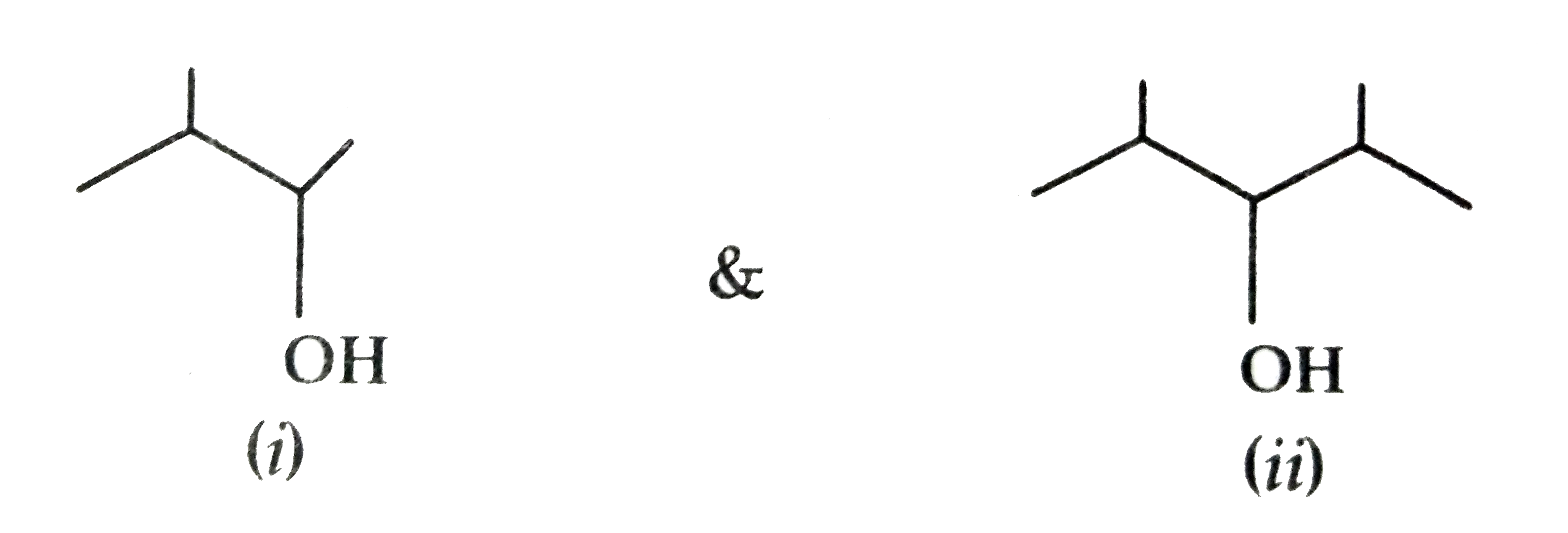Ethers in contact with air for a long time form peroxides. The presence of peroxide in ether can be tested b y adding Fe2+ ions followed by the addition of
KCNS
SnCI2
HgCI2
KI.
The correct Answer is:A
NA
Topper's Solved these Questions
- BOOK - DINESH PUBLICATIONCHAPTER - NO IDEAEXERCISE - Revision Question form competitive exams.43videos
NO IDEA
- BOOK - DINESH PUBLICATIONCHAPTER - NO IDEAEXERCISE - Selected12videos
NO IDEA
- BOOK - DINESH PUBLICATIONCHAPTER - IONIC EQUILIBRIUM EXERCISE - UNIT TEST -230videos
IONIC EQUILIBRIUM
- BOOK - DINESH PUBLICATIONCHAPTER - ORGANIC COMPOUNDS WITH FUNCTIONAL GROUP CONTAINING HALOGENS EXERCISE - UNIT TEST - 537videos
ORGANIC COMPOUNDS WITH FUNCTIONAL GROUP CONTAINING HALOGENS
Similar Questions
(a) Identify the chiral molecule in the following pair :

(b) Write the structure of the product when chlorobenzene is treated with methyl chloride in the presence of sodium metal and dry ether .
(c) Write the structure of the alkene formed by dehydrohalogenation of 1-bromo-1-methylcyclohexane with alcoholic KOH.View SolutionAlkali metals burn in air to form oxides, peroxides and superoxides. Lithium burns in moist air to form normal oxide as the major product. Some lithium nitride is also formed if nitrogen is present. Sodium loses lustre and forms both normal oxide and peroxide, the peroxide being the major product. Rest of all alkali metals form peroxides. All metals can be forced to form oxides, peroxides and superoxides by dissolving in liquid ammonia and bubbling appropriate amount of O2.
Which of the following oxides is the strongest oxidising agent :View Solution
Knowledge Check
- Question 1 - Select One
Ethers in contact with air for a long time form peroxides. The presence of peroxide can be tested by adding Fe2+ ions, followed by the addition of :
AKCNSBSnCl2CHgCl2DKI - Question 2 - Select One
Ethers in contact with air for a long time form peroxides. The presence of peroxide in ether can be tested b y adding Fe2+ ions followed by the addition of
AKCNSBSnCl2CHgCl2DKI - Question 3 - Select One
Statement-I: Ethers o reaction with air and light form hydroperoxides. These peroxides decompose vilently at high temperature. Allyln-n-propyl ether with O2 in lgiht gives mainly l-hydroperoxide allyl-n-propyl ether
Statement-II: The reaction proceeds via the formation of radical anion.AIf both statement-I & statement-II are true & the statement-II is a correct explanation of the statement-IBif both statement-I & statement-II are true but statement-II is not a correct explanation of the statement-ICIf statement-I is true but the statement-II is false.DIf statement-I is false but the statement-II is true.
Alkali metals burn in air to form oxides, peroxides and superoxides. Lithium burns in moist air to form normal oxide as the major product. Some lithium nitride is also formed if nitrogen is present. Sodium loses lustre and forms both normal oxide and peroxide, the peroxide being the major product. Rest of all alkali metals form peroxides. All metals can be forced to form oxides, peroxides and superoxides by dissolving in liquid ammonia and bubbling appropriate amount of O2.
Which among the following oxides turn red litmus paper blue :View SolutionRead the given passage and answer questions number 1 to 5 that follow :
A variety of alkenes or dienes and their derivatives are polymerised in the presence of a free radical generating initiator (catalyst) like benzoyl peroxide, acetyl peroxide, tert-butyl peroxide, etc. For example, the polymerisation of ethene to polythene consists of heating or exposing to light a mixture of ethene with a small amount of benzoyl peroxide initiator. The process starts with the addition of phenyl free radical formed by the peroxide to the ethene double bond thus generating a new and larger free radical. This step is called chain initiating step. As this radical reacts with another molecule of ethene, another bigger sized radical is formed. The repetition of this sequence with new and bigger radicals carries the reaction forward and the step is termed as chain propagating step. Ultimately, at some stage the product radical thus formed reacts with another radical to form the polymerised product. This step is called the chain terminating step.
List the different steps involved in polymerisation reaction.View SolutionThe comple [Fe(H2O)6NO]2+ is formed in the brown ring test fro nitrates when freshly prepared FesO4 solution is added to aqueous solution of NO−3 ions followed by addition of conc. H2SO4. Select correct statement about this complex.
View SolutionAssertion : Propene reacts with HBr in presence of benzoyl peroxide to yield 1− bromopropane.
Reason : In presence of peroxide , the addition of HBr to propane follows ionic mechanism.View SolutionAddition of HBr to 2-methyl1-prop-1ene in the presence of hydrogen peroxide mainly forms
View Solution

